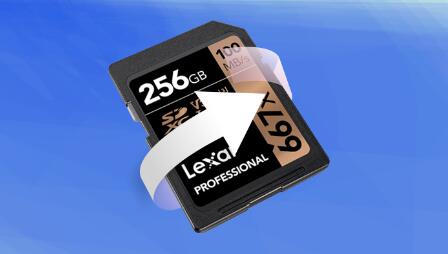SD cards are widely used in devices like cameras, smartphones, and tablets for storing photos, videos, and other files. However, data loss can occur due to accidental deletion, formatting, or corruption. Understanding how to recover deleted files from an SD card is essential for anyone who relies on this storage medium.
SD Card Data Loss
Common Causes of Data Loss
Accidental Deletion: Files can be mistakenly deleted by the user, leading to loss of important data.
Formatting: Formatting an SD card erases all files. Users might format their cards without backing up data.
Corruption: File system corruption can occur due to improper ejection of the card, power failure, or malware.
Physical Damage: SD cards can be damaged by exposure to water, extreme temperatures, or physical stress.

Importance of Immediate Action
When files are deleted, they are not immediately erased from the storage device. Instead, the space is marked as available for new data. If you continue to use the SD card, the chances of overwriting the deleted files increase, making recovery difficult. Therefore, taking immediate action is crucial.
Preparing for Recovery
Steps to Take After Data Loss
Stop Using the SD Card: Immediately stop using the card to prevent data overwriting.
Remove the Card: Eject the SD card from the device to avoid any accidental writes.
Assess the Situation: Determine the cause of data loss to choose the appropriate recovery method.
Recovery Tools Overview
Several recovery tools are available for extracting deleted files from an SD card. Below are some popular options:
Free Recovery Software
Recuva: A user-friendly tool that allows for easy file recovery.
PhotoRec: A powerful, open-source tool that specializes in recovering lost files from various storage media.
TestDisk: Often used in conjunction with PhotoRec, it can recover lost partitions and make non-booting disks bootable again.
Paid Recovery Software
EaseUS Data Recovery Wizard: Offers a free trial but requires payment for full recovery features.
Stellar Data Recovery: A robust tool with various recovery options for SD cards and other storage devices.
Disk Drill: Provides a user-friendly interface with powerful recovery features.
Step-by-Step Recovery Process
Using Recovery Software
Step 1: Choose Your Recovery Software
Select a recovery tool based on your needs and the features offered. For this guide, we will use Recuva as an example.
Step 2: Download and Install
Visit the official Recuva website.
Download the software and install it on your computer. Ensure you install it on a different drive than the SD card to avoid overwriting data.
Step 3: Connect the SD Card
Insert the SD card into the card reader or directly into your computer.
Make sure the card is recognized by the computer.
Step 4: Run Recuva
Launch Recuva.
Choose the type of file you want to recover (e.g., pictures, documents).
Select the SD card as the location to search for deleted files.
Step 5: Scan the SD Card
Click on “Start” to begin the scanning process.
Recuva will scan for deleted files. This may take some time, depending on the size of the card.
Step 6: Preview and Recover Files
Once the scan is complete, Recuva will display a list of recoverable files.
Preview the files to find the ones you wish to recover.
Select the desired files and click on “Recover.”
Choose a destination folder on your computer to save the recovered files. Avoid saving them back onto the SD card to prevent overwriting.
Manual Recovery Methods
In some cases, manual recovery might help, especially if the files were deleted recently.
Check Recycle Bin: If the SD card was connected to a computer, check the Recycle Bin for accidentally deleted files.
File History or Backup: If you have a backup system in place, check to see if the files are stored there.
Tips for Successful Recovery
Use Reliable Software: Ensure the recovery tool you choose is reputable and well-reviewed.
Avoid Overwriting: Do not write new files to the SD card after data loss.
Regular Backups: Regularly back up your important files to prevent future data loss.
Follow Software Instructions: Adhere to the recovery tool’s guidelines for the best results.
Preventing Future Data Loss
Best Practices for Data Management
Regular Backups: Create regular backups of important files to cloud storage or external hard drives.
Safely Eject SD Cards: Always use the safe eject option to avoid corruption.
Use Reliable Storage Devices: Invest in high-quality SD cards to minimize the risk of failure.
Monitoring Card Health
Check for Errors: Regularly check the SD card for errors using built-in tools like Windows Error Checking.
Replace Old Cards: Consider replacing old or heavily used SD cards to prevent data loss due to age.
About us and this blog
Panda Assistant is built on the latest data recovery algorithms, ensuring that no file is too damaged, too lost, or too corrupted to be recovered.
Request a free quote
We believe that data recovery shouldn’t be a daunting task. That’s why we’ve designed Panda Assistant to be as easy to use as it is powerful. With a few clicks, you can initiate a scan, preview recoverable files, and restore your data all within a matter of minutes.
Subscribe to our newsletter!
More from our blog
See all postsRecent Posts
- Dell backup and recovery windows 11 2025-04-21
- Dell os recovery tool keeps crashing 2025-04-21
- Raw hdd data recovery 2025-04-21

 Try lt Free
Try lt Free Recovery success rate of up to
Recovery success rate of up to









